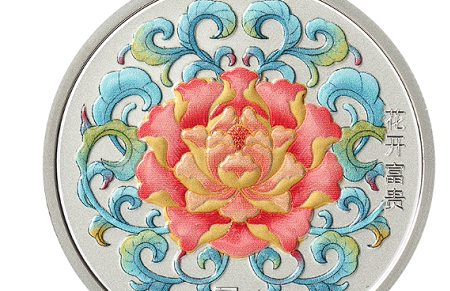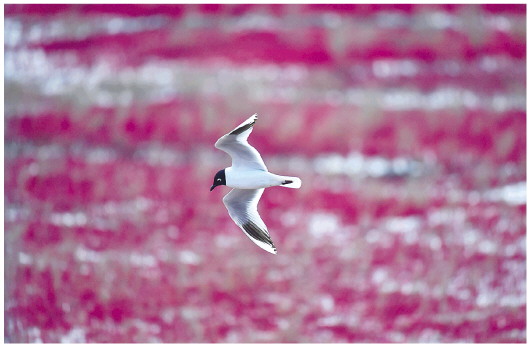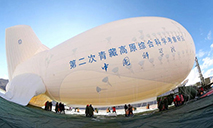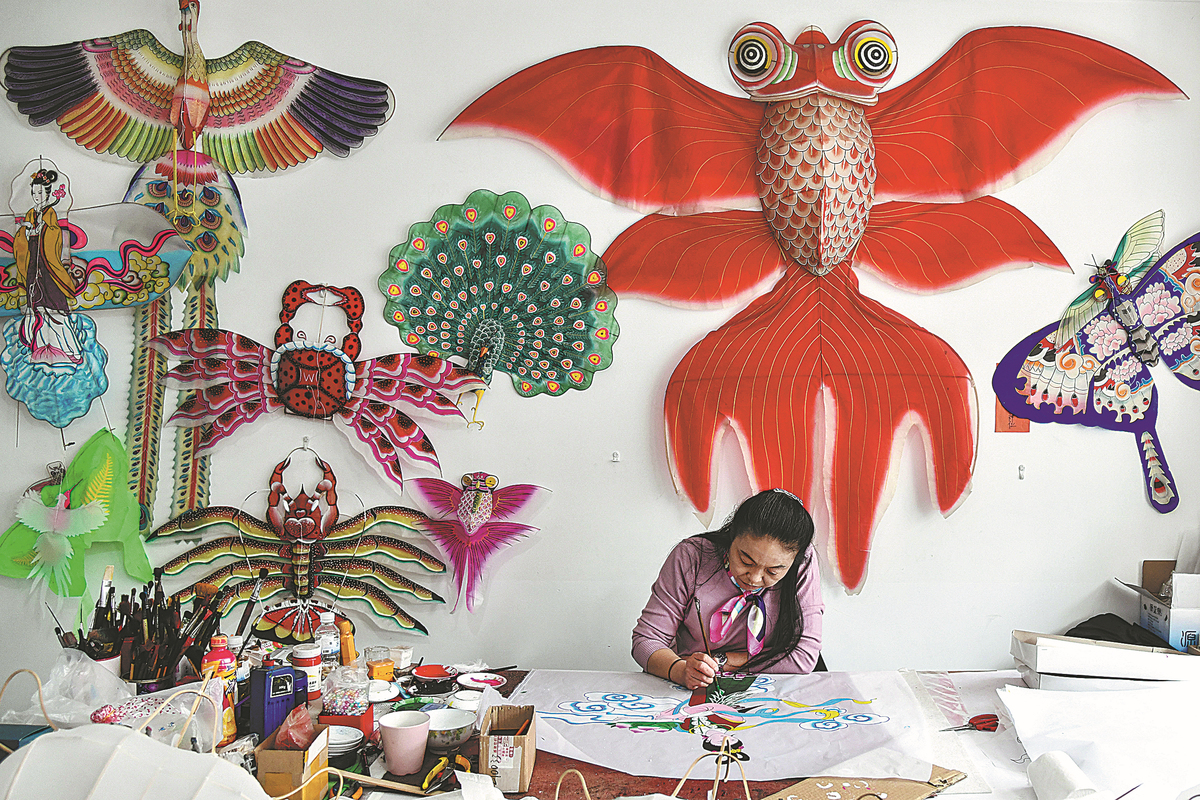World kite capital set to soar with rich heritage, industry advantages
Yang Hongwei, an intangible cultural heritage inheritor of Weifang kite-making in Yangjiabu village in Weifang, paints a kite in April 2021. Yang learned kite-making from her grandfather in 1982 and has shown her skills in cities such as Beijing and Shenzhen, Guangdong province, as well as internationally. ZHU ZHENG/XINHUA
Editor's Note: This series of stories looks at local enterprises in specialized sectors that have a share in global markets.
In April, crowds in Weifang, Shandong province, looked to the skies in awe.
High above them, "spacecraft" reenacted the breakthrough docking procedure that had set a milestone in China's space program.
The spectacle was complete with a station module and an astronaut spacewalk, all made up of a huge, complex structure of kites soaring on the wind.
The China Space Station kite-put together by more than 20 craftsmen over two months and combining traditional techniques with state-of-the-art digital modeling technology-went viral online.
"From superheroes to dinosaurs, in Weifang, anything can fly in the sky," one netizen gushed.
Weifang is widely known as the world's kite capital. The city acknowledges this with kite-themed landmarks including a railway station depicting a fluttering butterfly, public sculptures portraying the popular pastime, and streetlights along the main thoroughfare leading to the sprawling venue for an annual international kite festival.
At Weifang Kaixuan Kite Manufacturing Co, workers make kites ranging from gleaming airplanes and beautiful landscape paintings to lifelike marine creatures, such as whales and octopuses.
"More than 95 percent of these kites are exported and have been sold in more than 40 countries and regions, including New Zealand, France and Denmark," company Chairman Wang Xiaoping said.
"When we exhibit our kites abroad, we say we are from Weifang. Foreigners know it as the kite capital of the world, and our products are very popular with them."
According to local historical records, Weifang kites were popular during the Ming Dynasty (1368-1644) and were a major folk art in the Qing Dynasty (1644-1911), with many artists becoming widely known for their exquisite, high-flying creations.
Weifang kites took off after the country's reform and opening-up. In 1984, its kites were sent to Shanghai to take part in an exhibition, impressing officials of an international kite association who immediately suggested that the city set up a global platform for the art. This led to the first Weifang International Kite Festival that same year.
Kite enthusiasts from 11 countries and regions participated in the event and were amazed by the intricacy, vividness and grandeur of Weifang kites.
The city's kite sector has continued to grow, with the festival being held every year since 1984. There are currently more than 400 kite companies in the city, and they employ more than 80,000 people. Each year, more than 220 million kites are made, with annual sales of more than 2 billion yuan ($297 million), according to municipal authorities.
"Weifang kites account for more than 75 percent of the international kite market and nearly 85 percent of the domestic market," said Zhang Jianwei, director of the comprehensive service center at the Weifang International Kite Association.
At least 29 kite export companies are registered in the city, with markets on five continents.
 |
Photos
 China’s central bank to issue commemorative coins on cultural theme of auspiciousness, including two heart-shaped coins
China’s central bank to issue commemorative coins on cultural theme of auspiciousness, including two heart-shaped coins Population of endangered black-headed gulls exceeds 10,000 mark in NE China’s coastal city of Panjin
Population of endangered black-headed gulls exceeds 10,000 mark in NE China’s coastal city of Panjin China's self-developed floating airship breaks record
China's self-developed floating airship breaks record Chinese germplasm bank conserves biodiversity in warm temperate zone
Chinese germplasm bank conserves biodiversity in warm temperate zone
Related Stories
- 4th edition of International Kite and Wind Festival opens in Malta
- 83-year-old craftsman in Xi’an uses bamboo to create movable terracotta warriors and chariots
- Pic story: Kite enthusiasts
- 50-meter-long dragon kite catches eyes at Urumqi kite show
- Kite-flying competition between China, ASEAN countries held in Guangxi
Copyright © 2022 People's Daily Online. All Rights Reserved.







